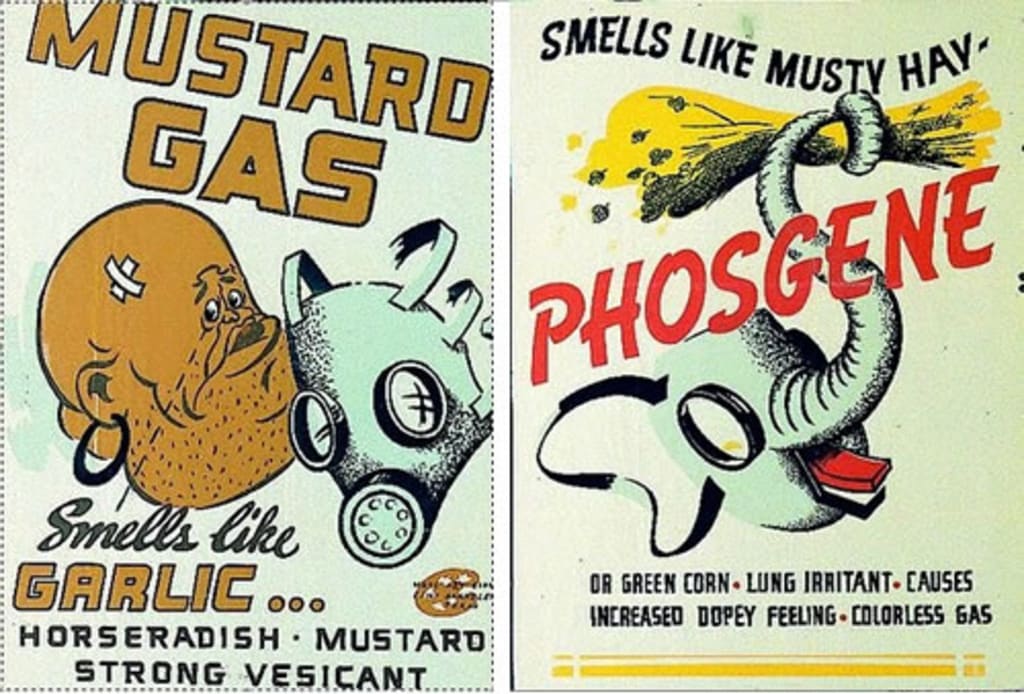The WW1 weapon you can’t live without
Phosgene gas and the plastic industry

When people think of WW1, they often conjure up thoughts of the infamous phrase “trench warfare.” Images of shell-shocked soldiers sitting in trenches with eyes that hold a million stories many would never be able to tell and gruesome wounds that forever shaped a generation may spring to thought. Just as likely would the history class every student takes in 10th grade explaining the bare-bones facts of the war with glossy pages detailing mustard gas and the newly emerging concept of “shell shock” that would later go on the be named PTSD. Students in advanced world history might cover a bit of the politics that took place before the bubbling cauldron in the Balkans finally boiled over. It might cover the assassination that sent an entire generation to the front lines that took a backseat to WW2 when it came time for their yearly history exam. However, while mustard gas often left painful and debilitating blisters on soldiers. It wasn’t even close to being the deadliest chemical weapon used on the battlefield.
Phosgene was synthesized by the chemist John Davy in 1812 by exposing a mixture of carbon monoxide and chlorine to sunlight. It was named “phosgene” in reference to the use of light to promote the reaction; from Greek, phos (light) and gene (born). It was then used as a chemical weapon during World War I by the Germans and soon became the primary weapon of the allies. Unlike chlorine gas which produced a visible greenish-yellow cloud that smelled strongly of bleach and immediately irritated the mucosa regions, Phosgene was colorless with only a slight smell of musty hay. It also had no immediate effect on soldiers receiving a fatal dose. It was only after a day or two, victims’ lungs would fill with fluid as it ate away the lining and reacted with proteins in the alveoli. Slowly, the victim suffered a terrible suffocating death. Phosgene was responsible for 85% of chemical-weapons fatalities during World War I cumulating in over 91,000 deaths.
However, today Phosgene is used as a raw material to produce two essential chemicals: methylene diphenyl diisocyanate (MDI) and toluene diisocyanate (TDI). Without Phosgene, we wouldn’t have the substances necessary for manufacturing products used in everyday life. Everything from flexible foam, upholstered furniture, and adhesives to medical devices, and even insulation starts with a gas our forefathers were taught to avoid at all costs on the battlefield. The synthetization of polycarbonate plastic, in particular, is one of Phosgene’s main uses as of today, with the plastic itself being essential in many fields. Laboratory safety glasses, greenhouse paneling, 5-gallon water jugs, CDs and DVDs, and bulletproof glass are all made from the plastic made from one of the most infamous WW1 weapons.
That isn’t to say the gas is safe now. Thanks to rigorous restrictions on who can store and produce phosgene, fatalities aren’t frequent, and even those who have been exposed can often make a full recovery. However, chronic bronchitis and emphysema have been observed as a result of phosgene exposure. Pulmonary edemas also occur the higher the dosage becomes. On January 23, a release of the highly toxic gas at the DuPont facility in West Virginia resulted in the death of an operator. DuPont later explained that a braided steel hose used to connect a phosgene storage tank suddenly ruptured and released Phosgene into the air. The operator who was accidentally exposed to the chemical was transported to the nearest hospital. However, he unfortunately died the following day. Since scientists are still unsure just how Phosgene does manage to damage the lungs there is still no antidote. So while Phosgene may be an essential building block of everyday life, it’s still just as deadly as when it was used on the battlefield.






Comments
There are no comments for this story
Be the first to respond and start the conversation.